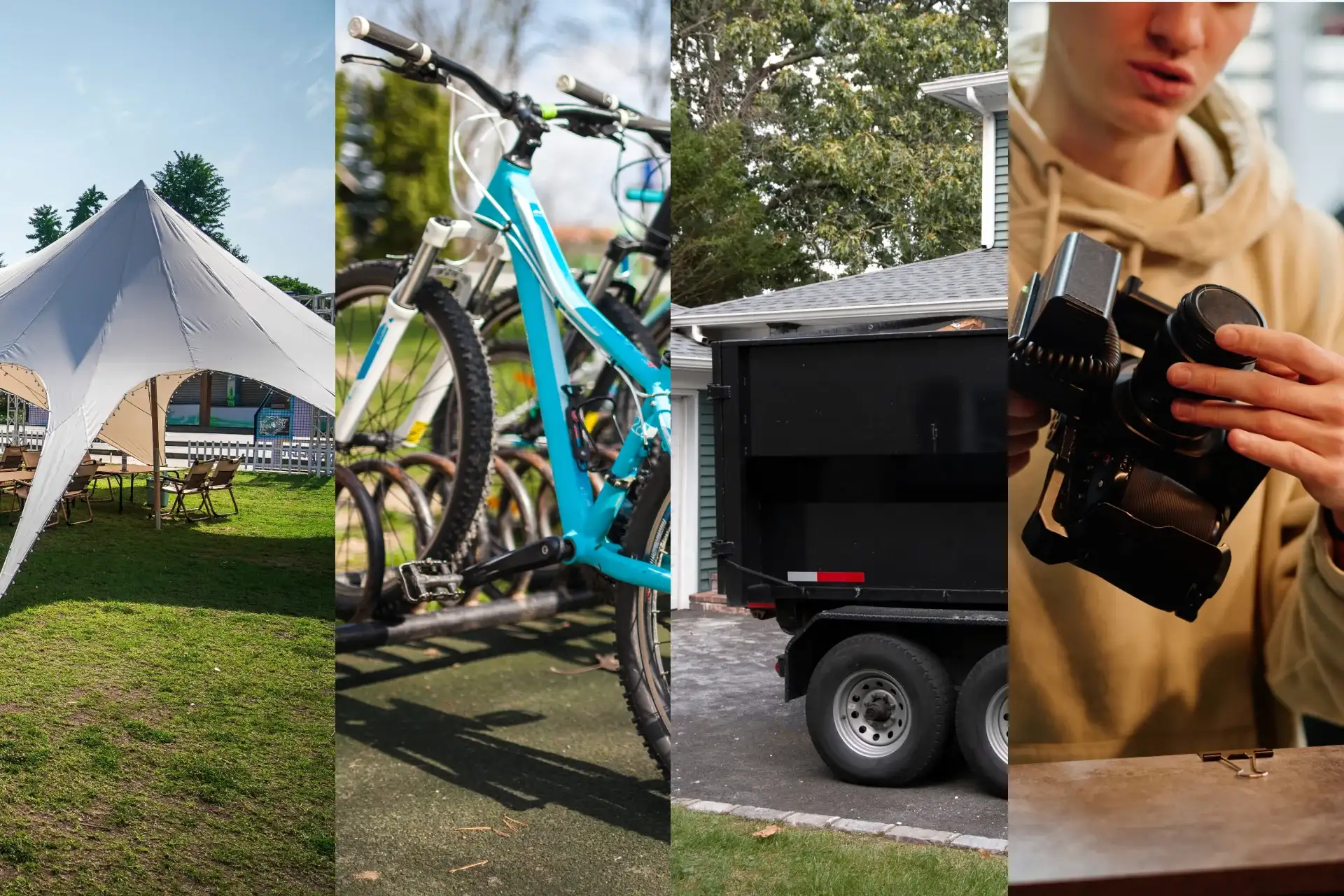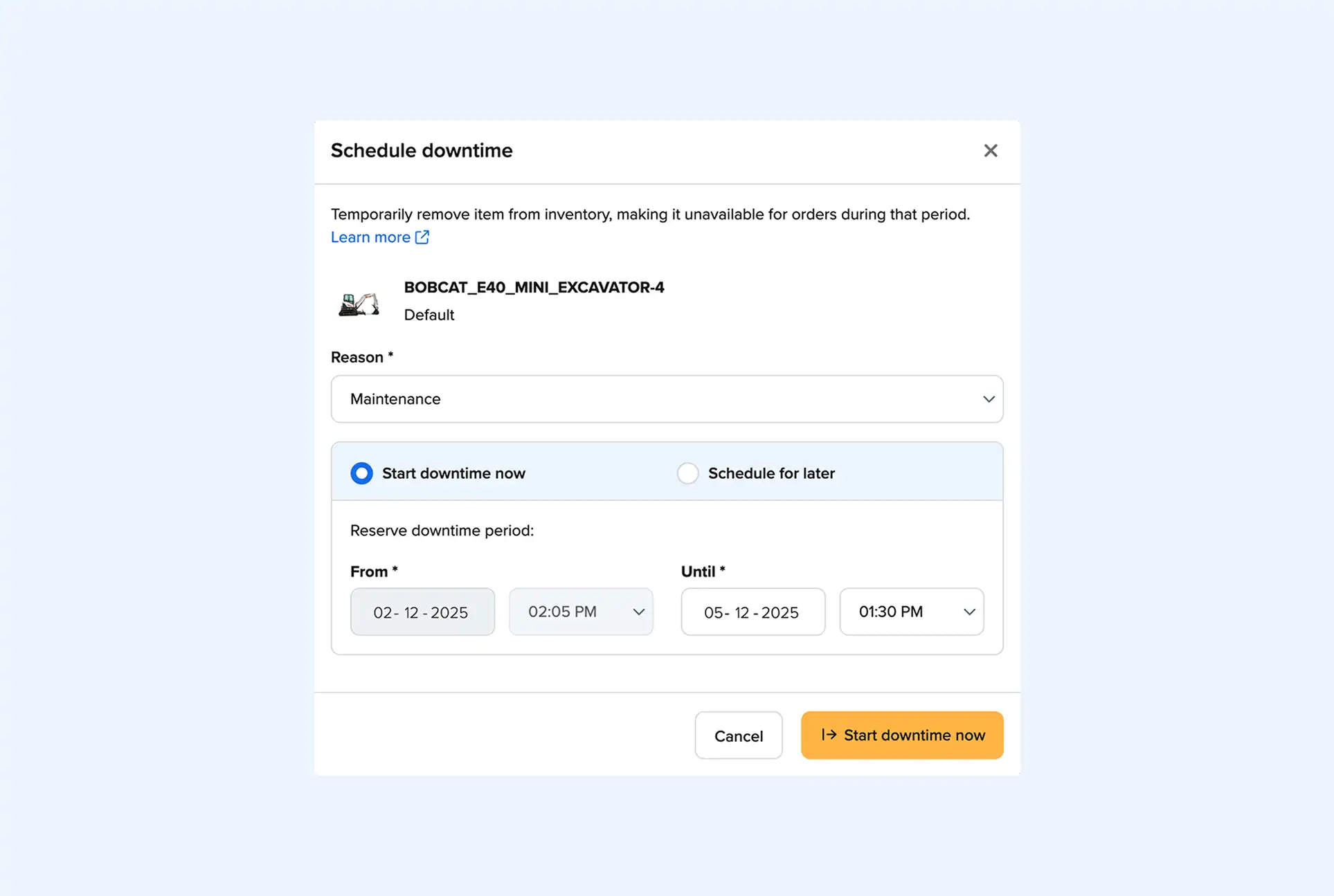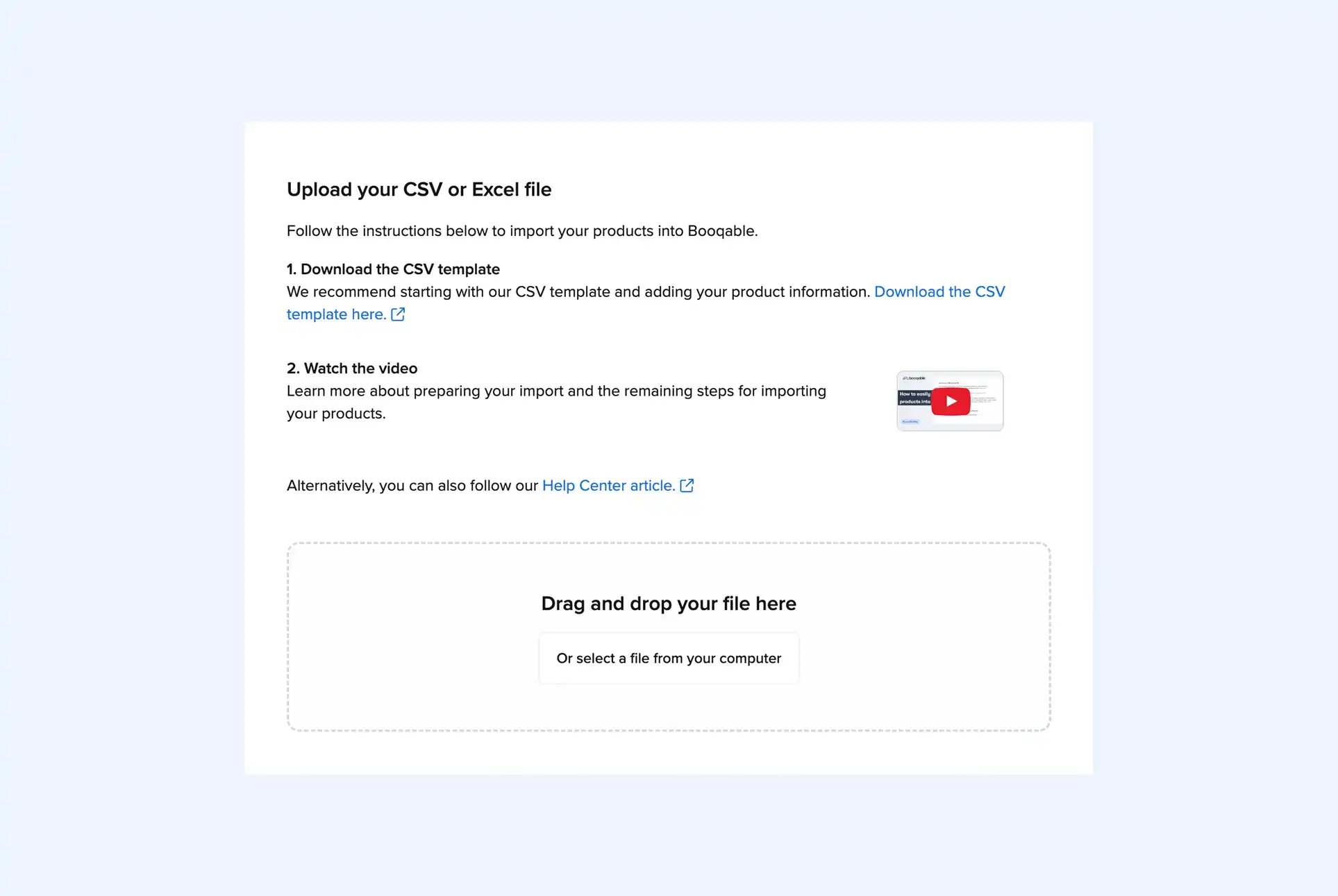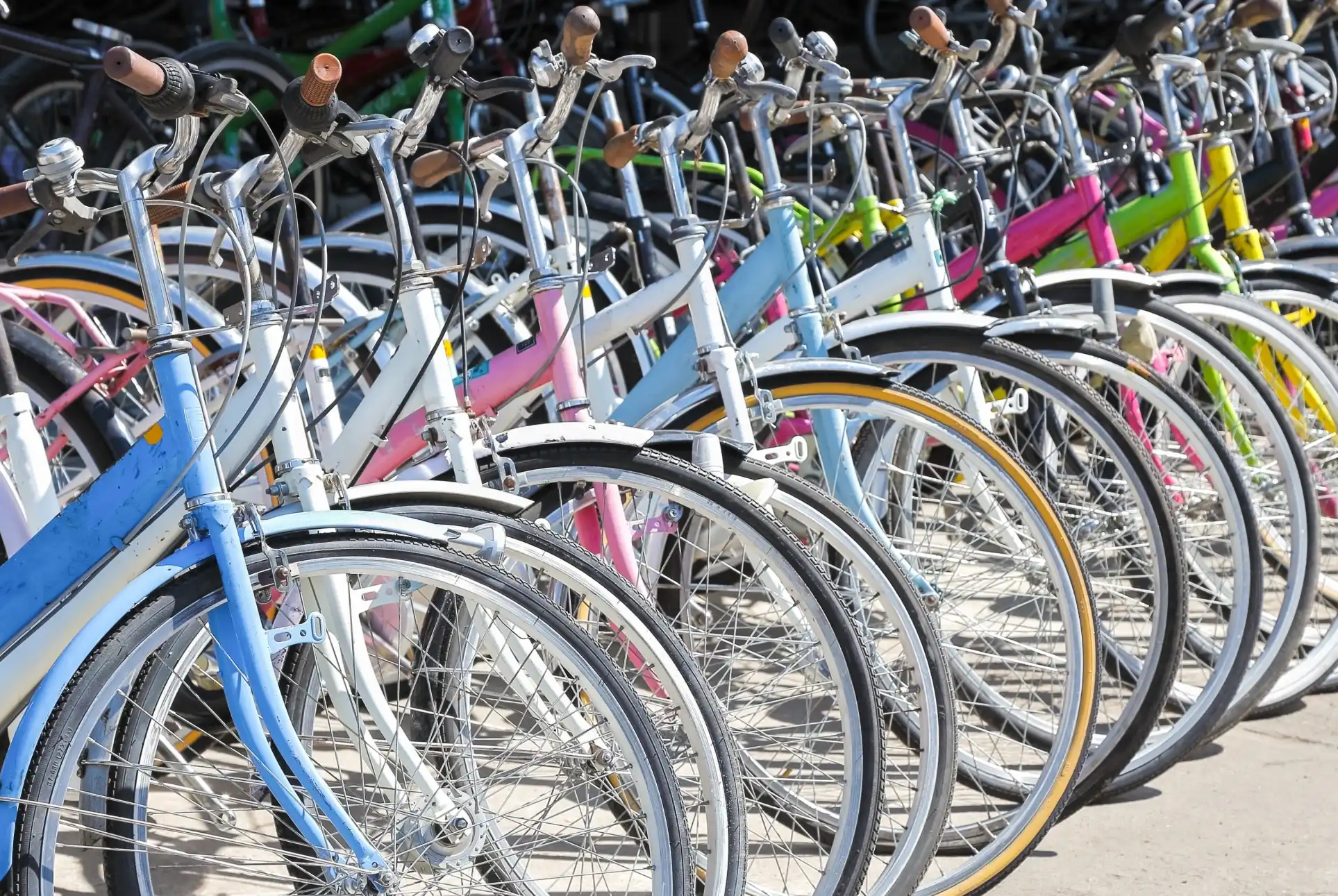Effective rental inventory management is about more than just knowing what equipment you have. It’s about making smart decisions that keep your rental inventory organized and your customers happy. Whether you rent out construction equipment, photography gear, or event supplies, proper equipment inventory control makes the difference between thriving and just surviving.
Contents:
- Getting started with equipment tracking systems
- Product information in your rental inventory
- Real-time inventory tracking and historical data
- Equipment lifecycle management
- Organization and categorization
- Inventory control and pricing strategies
- Prevent common inventory management problems
- Data-driven inventory management decisions
- Scaling equipment rental management
Getting started with equipment tracking systems
The first step in effective rental asset management is deciding how to track your equipment. Some items need individual tracking, while others work better tracked in bulk. For example, Sharegear, a leading camera rental company in Australia, needs to track each camera body and lens separately as part of their rental equipment management system, recording unique identifiers and maintenance history. However, tracking total quantities through bulk inventory management makes more sense for smaller accessories like memory cards or cables.
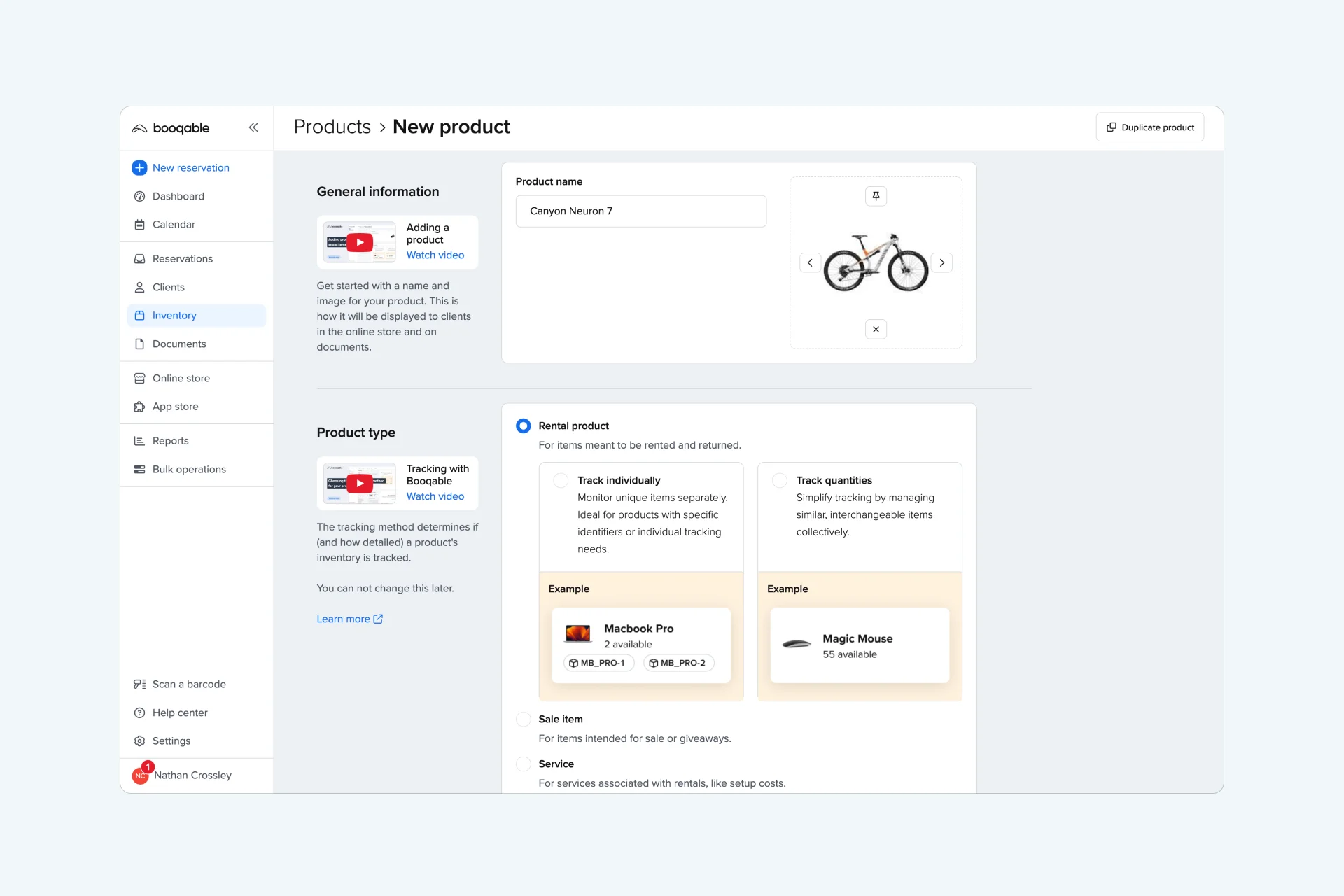
Booqable offers two primary inventory tracking methods to handle different types of rental items. The trackable inventory system lets you assign unique identifiers to high-value items, making monitoring their specific history and availability needs easy. For lower-value items that don’t need individual tracking, the bulk inventory control simplifies the process by focusing on quantities rather than individual pieces.
Start your rental business for just $29/month
Put your toes in the water and test the demand in your area with a rental website for just $29/month.
Product information in your rental inventory
Effective rental inventory management starts with detailed product information. Booqable provides several ways to organize and enhance your product listings, making them both easier to manage internally and more appealing to customers.
SKU management for better organization
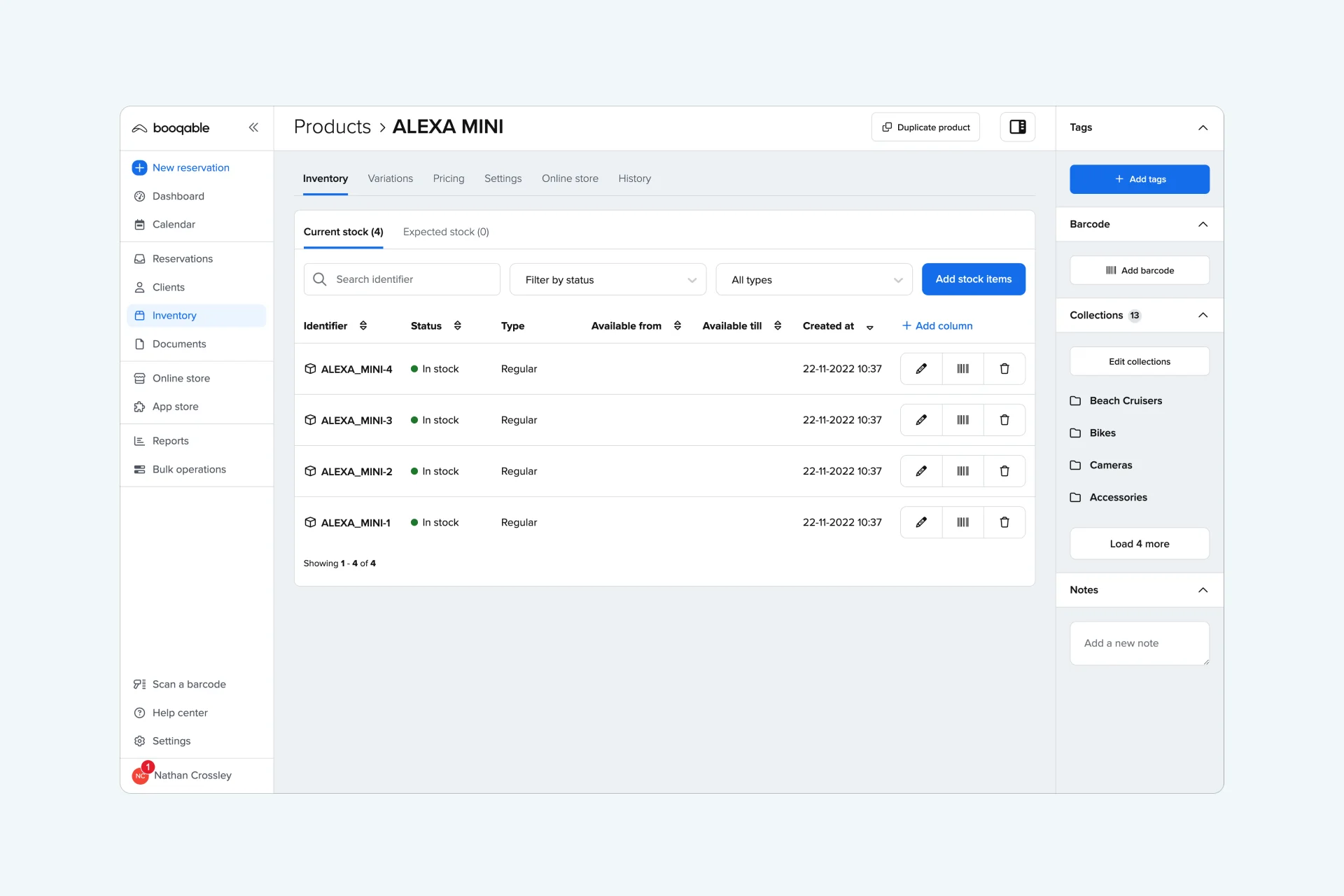
Every product in your rental inventory needs a unique identifier, known as a Stock Keeping Unit (SKU). While Booqable automatically generates SKUs based on product names, you can customize them to match your organizational system. For example, a photography rental business might use SKUs like “CAM-SON-A7III” for a Sony A7III camera or “LENS-SON-70200” for a 70-200mm lens. This structured approach makes searching and sorting your inventory more efficient.
Product photos
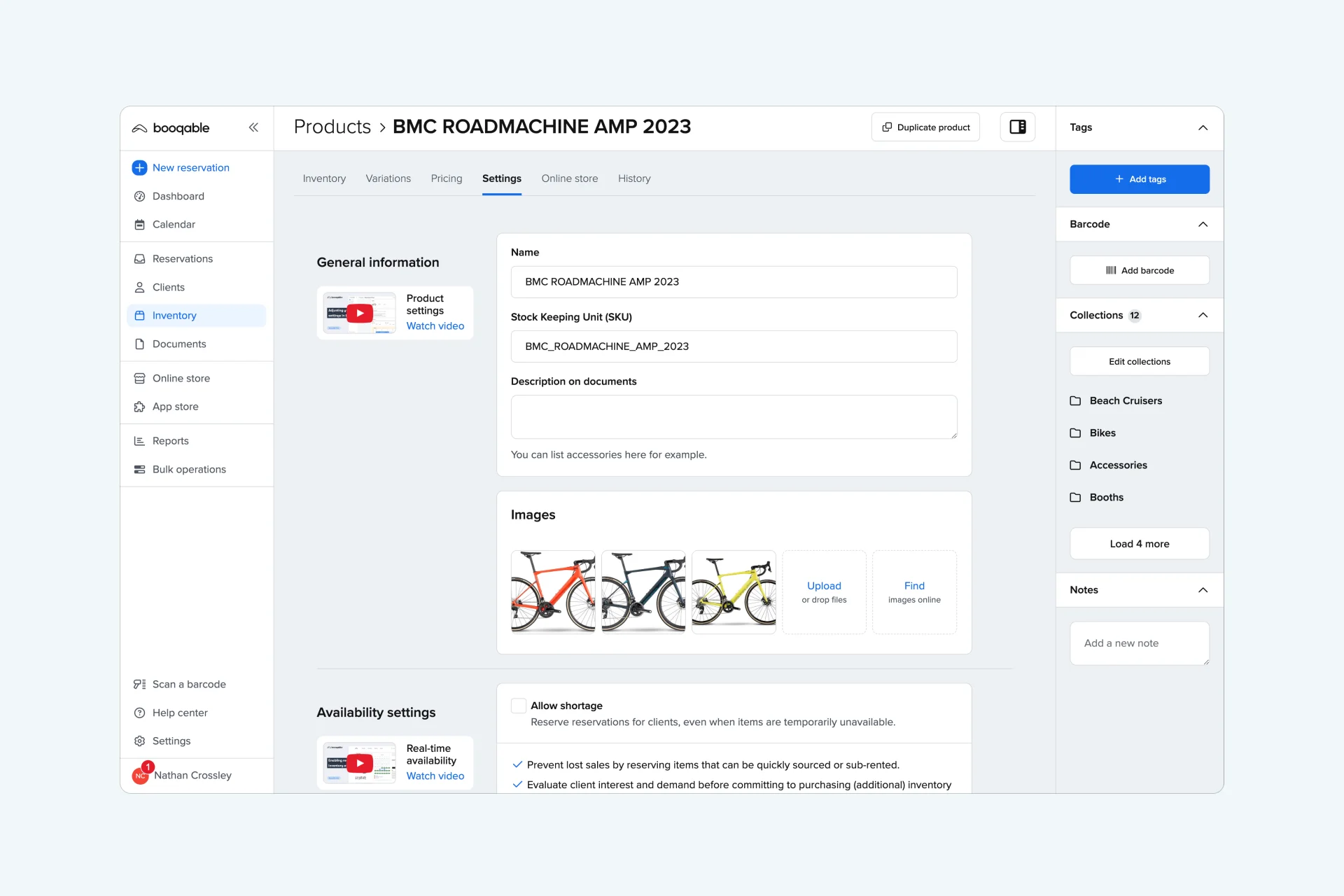
Clear product photos help both your staff and customers understand exactly what they’re working with. Booqable allows you to add multiple photos for each product, showing different angles or use cases. When you create a new product, the system can even suggest relevant images based on the product name, though it’s always better to use your own photos to show the actual items customers will receive.
Managing product variations
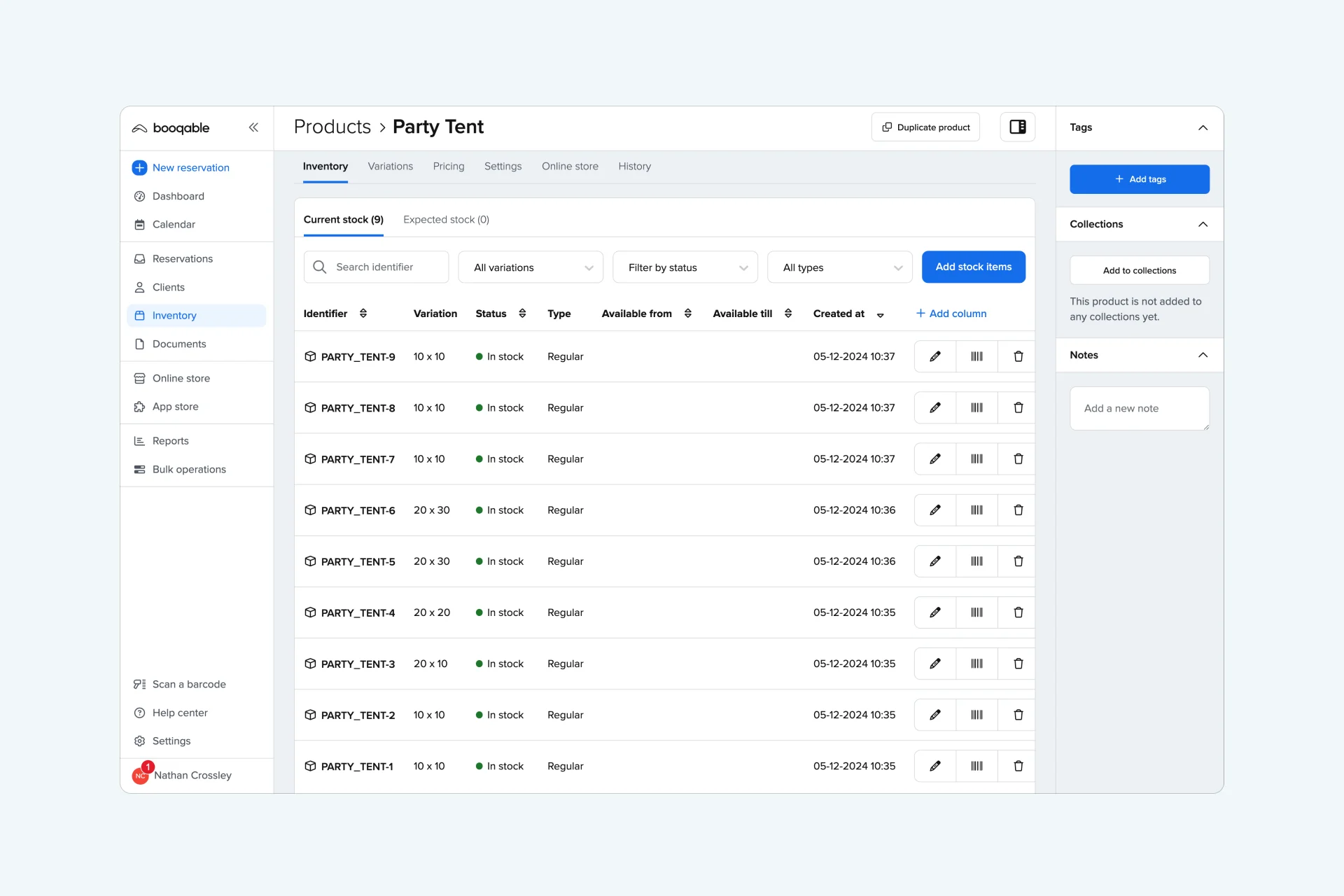
Many rental items come in different sizes, colors, or configurations. Instead of creating separate products for each version, Booqable’s variation system lets you manage them under a single product listing. Each variation can have its own pricing and availability tracking while maintaining the organization of a single product listing.
Creating product bundles
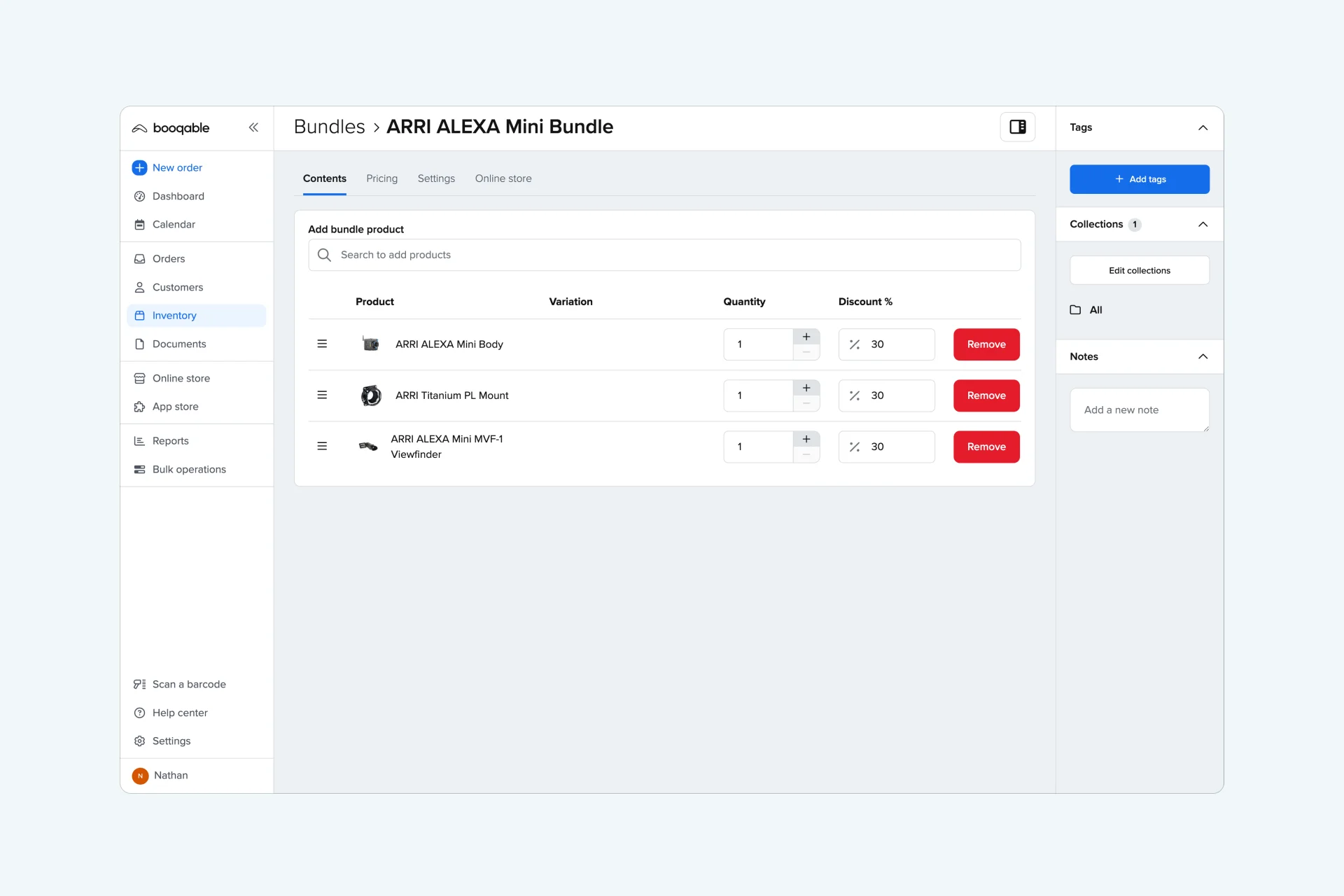
Bundles streamline the rental process by grouping commonly rented items together. A video production rental company might create bundles like the “Indie Film Kit,” which includes a camera body, a standard zoom lens, two batteries, memory cards, and a basic lighting kit. Booqable’s bundle feature automatically manages the availability of all included items, preventing double-booking of equipment that’s part of multiple bundles.
Real-time inventory tracking and historical data
Modern rental management systems provide real-time insights into equipment availability and usage patterns. Booqable’s calendar view shows exactly when items are available, reserved, or scheduled for maintenance. This prevents double bookings and helps you plan effective inventory management strategies.
For instance, a seasonal business like Aktivt Uteliv, which manages both summer and winter equipment rentals, uses Booqable’s calendar view to show exactly when items are available, reserved, or scheduled for maintenance. This prevents double bookings and helps plan effective inventory management strategies.
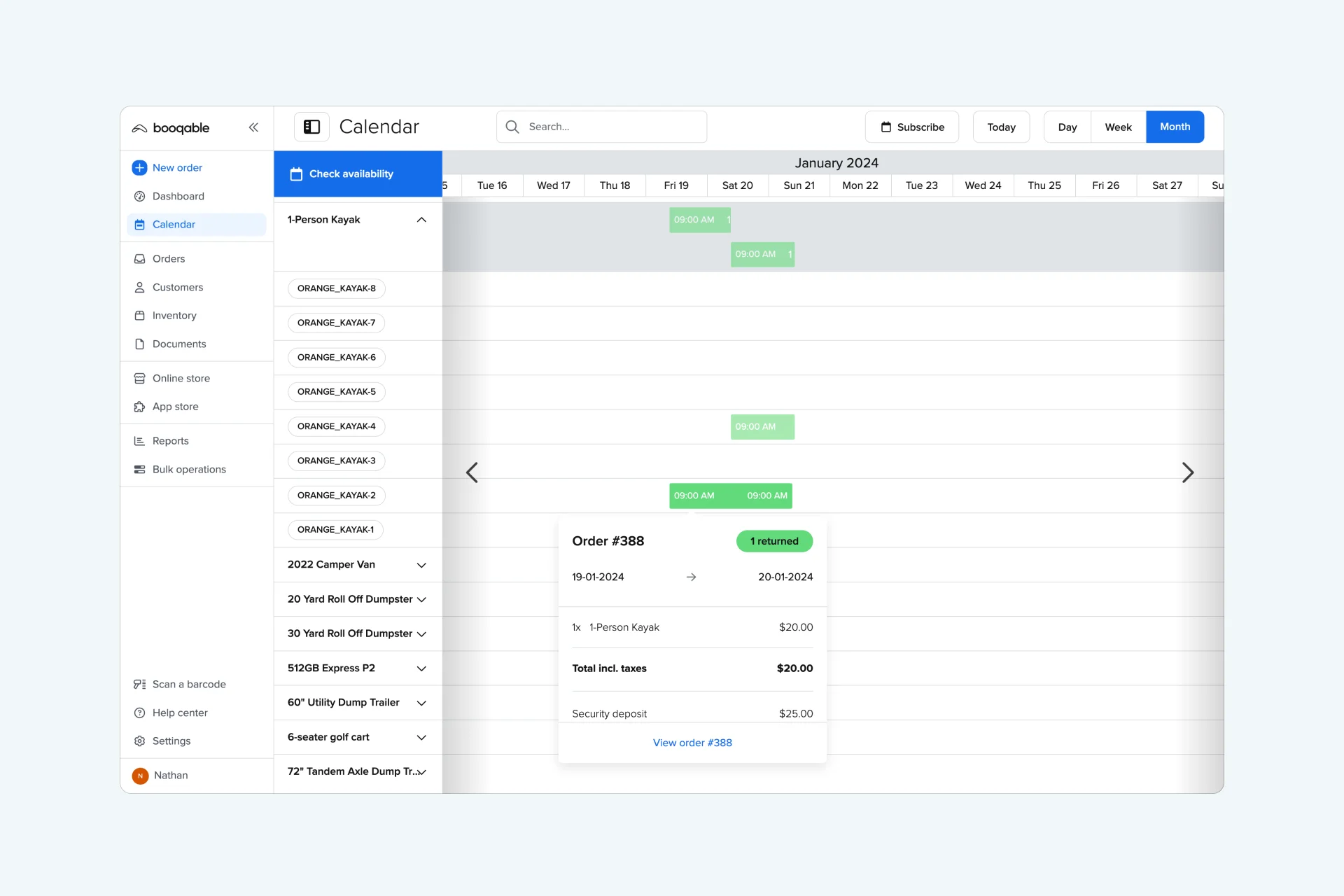
The reporting feature in Booqable provides detailed analytics about product performance, helping you understand which items generate the most revenue and when they perform best. You can sort products by key performance indicators like rent duration and turnover, making it easier to identify trends and make informed decisions about your inventory investments.
Start with building your rental website
Every new rental business starts with a website to get their first bookings.
Equipment lifecycle management
Every piece of rental equipment has a lifecycle. Understanding this helps you maintain quality while maximizing return on investment. Booqable’s buffer time feature lets you block out time before and after rentals for maintenance and preparation, ensuring your rental inventory management system keeps equipment in top condition without affecting availability.
Aspire Cycling utilized buffer time between rentals to prevent last-minute bookings and ensure the technical team has enough time to perform bike maintenance. This allowed them to ensure the bike’s were in top condition for the next rental, maintaining customer satisfaction and reducing the risk of equipment failure.
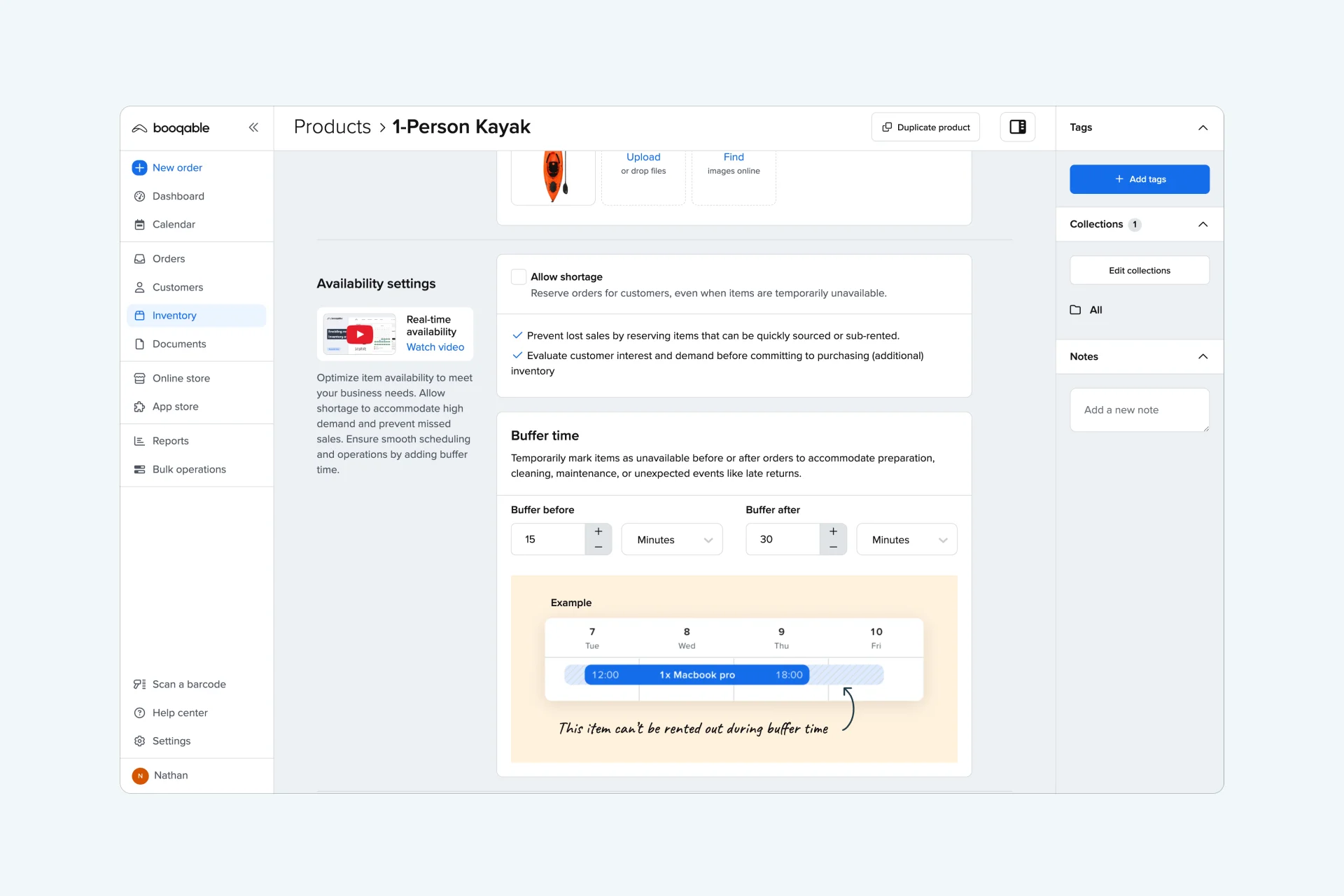
The platform’s custom fields and notes features let you maintain detailed notes for each piece of equipment, store the purchase price, and note part replacements. This historical data helps you make informed decisions about when to retire or replace items, ensuring your rental inventory remains high-quality and reliable.
Organization and categorization
Keeping your rental inventory organized is crucial for efficient management. Booqable’s tagging system lets you categorize products for easy searching and filtering. You can create tags for equipment types, locations, or assign products to categories. It is easy to find items quickly when combined with barcodes, which is especially useful when training new staff or managing an extensive equipment inventory.
For example, Paide Gümnaasium, a high school in Estonia, demonstrates this perfectly with its audiovisual equipment rental system. They use Booqable’s barcode system to organize their extensive cameras, cables, and lighting equipment inventory. Their innovative approach includes mounting single barcodes on storage room walls for bulk items like cables, simultaneously allowing quick scanning of multiple identical items.
Join thousands of rental business owners
In the last 12 months, hundreds of people have started their business with Booqable.
Inventory control and pricing strategies
Smart rental inventory management connects directly to pricing strategy. Booqable’s structured pricing feature lets you create tiered pricing based on rental duration, encouraging longer rentals when appropriate. You can also set different rates for peak seasons or special events, helping maximize revenue based on demand.
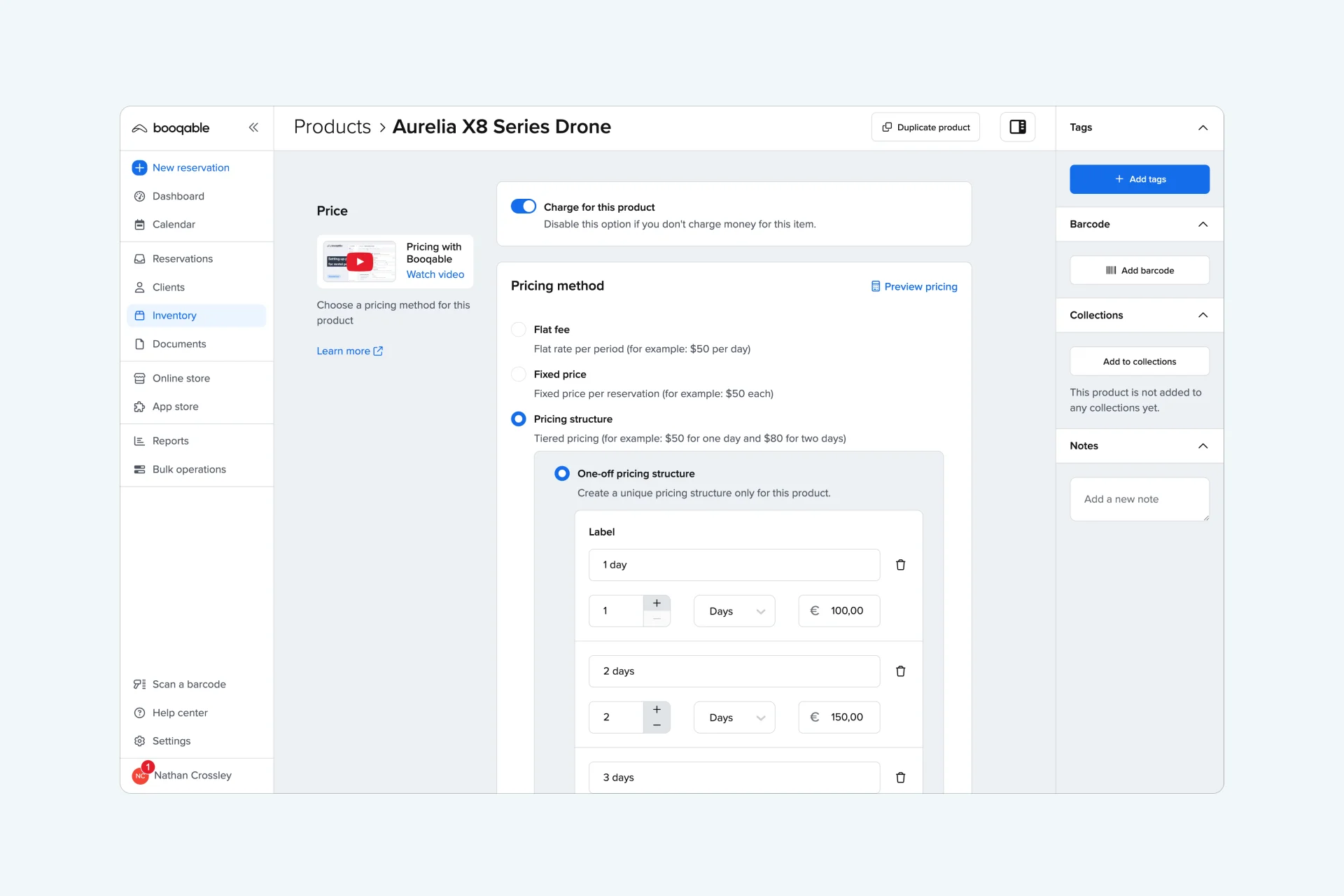
Having flexible inventory control systems is crucial for businesses facing unexpected challenges. When Treasure Coast Kayak temporarily closed due to a hurricane, Booqable’s system allowed them to manage cancellations and issue credits for future bookings efficiently, maintaining customer relationships during disruptions.
Prevent common inventory management problems
Most rental businesses face similar inventory control challenges. Here’s how Booqable helps prevent common issues:
Double booking: The real-time inventory availability calendar ensures you never double-book items. You can instantly see what’s available for the requested dates when creating new orders.
Lost equipment: Booqable’s barcode scanning feature lets you quickly check items in and out, maintaining accurate rental inventory tracking. The mobile app makes this process even more efficient, allowing staff to scan items anywhere.
Usage history: Detailed product usage history helps you understand which items are most popular and when they’re in demand. This data helps you make informed decisions about inventory investments and pricing strategies.
Start your rental business for just $29/month
Put your toes in the water and test the demand in your area with a rental website for just $29/month.
Data-driven inventory management decisions
Booqable’s rental inventory reporting features provide crucial metrics for inventory decisions:
Equipment utilization rate: Track how often each item gets rented
Revenue per item: See which pieces generate the most income
Historical trends: Understand seasonal patterns and long-term performance
Stock levels: Monitor availability and plan purchases
These insights help you make informed decisions about purchasing new equipment, retiring underperforming items, or adjusting your rental inventory mix to meet customer demand.
Scaling equipment rental management
As your rental business grows, Booqable grows with you. The platform supports multiple locations, allowing you to track rental inventory across different sites while maintaining central control. You can set up different warehouses, track equipment at locations, and maintain accurate stock levels everywhere you operate.
The system’s user permissions let you control what different staff members can access, making it easier to delegate inventory management responsibilities while maintaining oversight of your operation. This becomes especially important as you add new team members and locations.
Most important takeaways
Getting started with equipment tracking systems: The first step in effective rental asset management is deciding how to track your equipment. Some items need individual tracking, while others work better tracked in bulk.
Product information in your rental inventory: Effective rental inventory management starts with detailed product information. Booqable provides several ways to organize and enhance your product listings.
Real-time inventory tracking and historical data: Modern rental management systems provide real-time insights into equipment availability and usage patterns. Booqable's calendar view shows exactly when items are available, reserved, or scheduled for maintenance.
Equipment lifecycle management: Tracking the lifecycle of your rental equipment is crucial for maintaining the quality of your inventory. Booqable's buffer time feature helps you manage maintenance and repairs.
Organization and categorization: Organizing your rental inventory is essential for efficient management. Booqable's category system lets you group products together and filter your inventory by category.
